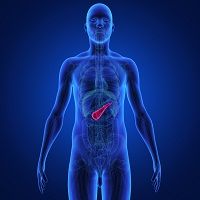Article
Fecal Elastase 1 As a Diagnostic Marker for Exocrine Pancreatic Insufficiency
Author(s):
Researchers recently evaluated the clinical utility of fecal concentration of elastase 1 as a means of identifying exocrine pancreatic insufficiency in patients with chronic pancreatitis.

For a variety of reasons, pancreatic exocrine insufficiency (EPI) can be difficult to diagnose in the early stages of disease. Because it is a common complication associated with chronic pancreatitis, it would be useful for clinicians to have a reliable, noninvasive test to aid in diagnosis.
The authors of “Comparison of Fecal Elastase 1 for Exocrine Pancreatic Insufficiency Evaluation Between Ex-Alcoholics and Chronic Pancreatitis Patients,” published in Arquivos de Gastroenterologia, hypothesized that measuring fecal elastase 1 would be an effective diagnostic marker for EPI, noting that “one advantage of fecal elastase 1 as a diagnostic marker is its low variability within an individual from day to day.”
For this study, the authors enrolled 43 patients with a diagnosis of chronic pancreatitis. Mean age of participants was around 53 years old. Patients reported steatorrhea-related symptoms and had their diagnosis confirmed by abdominal imaging procedures. Two-thirds of the patients had chronic pancreatitis caused by alcohol consumption.
These patients were divided into 2 groups: one group contained patients with tissue calcifications, duct alterations, or atrophy; the second group contained patients with only mild pancreatic alterations. Patients diagnosed with exocrine pancreatic insufficiency (based on clinical suspicion and pancreatic imaging findings) were started on pancreatic enzyme replacement therapy.
Thirty-three asymptomatic former alcohol addicts with normal pancreatic function (as evaluated by abdominal imaging procedures) were also enrolled in the study.
The researchers collected stool samples from all participants and tested them for fecal elastase 1 concentrations. They compared the levels of elastase 1 in samples from the former alcohol addicts to those in the samples taken from the other patients with chronic pancreatitis. The values were also compared “between patients with steatorrhea and treated with pancreatic enzymes, patients with diabetes, patients that had undergone surgical procedures, and patients with differing imaging findings.”
The authors reported that “levels of fecal elastase 1 were significantly (P<0.05) lower in the patients with chronic pancreatitis than in the former alcohol addicts.” Twenty-two of the total cohort of 43 chronic pancreatitis patients had fecal elastase 1 levels of >200 µg/g, 1 had levels of 100-200 µg/g, and 20 had levels of <100 µg/g. Among the former alcohol addicts, 28 had fecal elastase 1 levels of >200 µg/g, 1 had levels of 100-200 µg/g, and 4 had levels of <100 µg/g.
Fecal elastase 1 levels of <100 µg/g indicated severe exocrine pancreatic insufficiency, whereas levels of 100-200 μg/g indicated mild-to-moderate exocrine pancreatic insufficiency. A level of 200 μg/g or higher indicated normal function.
The authors reported that the sensitivity of fecal elastase 1 was 46.51% [95% CI = 32.54-61.07] with a specificity of 87.88% [95% CI = 71.91-95.66], a positive predictive value of 83.33% [95% CI= 63.37-93.77], and a negative predictive value of 55.77% [95% CI = 42.34-68.38]. When patients were stratified according to the severity of their pancreatitis, the sensitivity was 6.25% [95% CI = 0-30.65] for mild pancreatitis and 70.37% [95% CI = 51-84.2] for marked pancreatitis.
The levels of fecal elastase 1 were “significantly (P<0.05) lower” in the group of chronic pancreatitis patients with marked alterations (tissue calcifications, duct alterations, or atrophy ) than in those with only mild alterations.
In their discussion of these results, the authors noted that “severe exocrine pancreatic insufficiency was more frequent (46.5%) in the patients with chronic pancreatitis than in the group of former alcohol addicts (12.1%). When the patients with chronic pancreatitis were stratified into mild and marked alterations by imaging findings, “the levels of fecal elastase 1 indicated that those with marked alterations more frequently (70.4%) had severe exocrine pancreatic insufficiency than the patients with mild alterations (6.3%).”
They concluded that “the noninvasive detection of fecal elastase 1, although it provides higher sensitivity and specificity than chymotrypsin, has some limitations, such as difficulties in diagnosing mild-moderate chronic pancreatitis and in differentiating pancreatic from non-pancreatic malabsorption. Thus, fecal elastase 1 may be more useful for follow-up examinations of patients than for chronic pancreatitis diagnosis, as chronic pancreatitis is a progressive condition and fecal elastase 1 levels decreases accordingly.” However, they did note that this test may be useful to indicate pancreatic exocrine insufficiency in asymptomatic former alcohol addicts.




